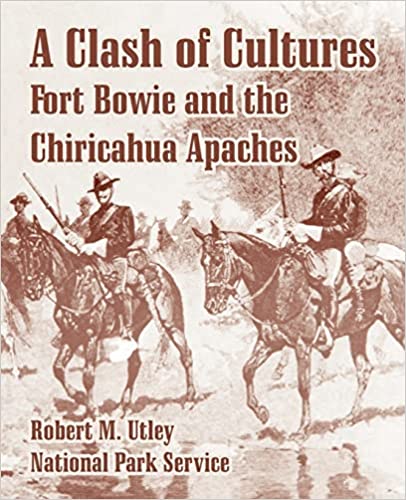
1886年9月8日,士兵和印第安人聚集在一个边境哨所的阅兵场上,哨所坐落在仙人掌丛生的群山之中。一列满载印第安家庭的敞篷货车周围形成了一条蓝衣士兵警戒线。当一支军乐队在旗杆基地拉起演奏《友谊地久天长》时,游行队伍离开堡垒向北行进。该哨所曾是亚利桑那州的鲍伊堡,四分之一个世纪以来一直是阿帕切里亚中心阿帕奇山口的一个孤独堡垒。印第安人是Geronimo和他的Chiricahua-Apaches乐队,他们在西南边疆的十多年灾难中。现在战争已经结束,胜利者带着一种音乐般的讽刺向被征服者告别,他们被押送到火车车厢,火车将载着他们向东驶向一个不确定的未来。今天,鲍伊堡憔悴的废墟坐落在一个被人类的作品破坏的环境中,这让人想起了美国过去的一个戏剧性和重要的阶段:“一个充满活力和侵略性的民族征服荒野的斗争,一个骄傲和独立的民族为保留荒野和他们所知道的生活方式而进行的斗争。”。
阅读更多
A Clash of Cultures: Fort Bowie and the Chiricahua Apaches
On September 8, 1886, soldiers and Indians gathered on the parade ground of a frontier post nestled amid cactus-studded hills. A cordon of blueclad troopers formed around a train of open wagons loaded with Indian families. As a military band drawn up at the base of the flagstaff played “Auld Lang Syne,” the procession moved out of the fort and headed north. The post was Fort Bowie, Arizona, for a quarter of a century a lonely bastion in Apache Pass, the heart of Apacheria. The Indians were Geronimo and his band of Chiricahua Apaches, for more than a decade scourges of the southwestern frontier. Now the warfare had ended, and with a touch of musical irony the victors bade farewell as the vanquished were escorted to the railroad cars that would bear them eastward to an uncertain future. Today the gaunt ruins of Fort Bowie, set in an environment otherwise uncluttered by man’s works, recall a dramatic and significant phase of the American past”Ythe struggle of a dynamic and aggressive people to conquer the wilderness, and the struggle of a proud and independent people to retain the wilderness and the way of life they had known.
Read more
OR


![极北:文化史[有声读物]](https://www.yousuxue.com/wp-content/themes/riplus/timthumb.php?src=https://sanet.pics/storage-8/0422/2yWjBp3WdYBKlWshxa6utRPV54fRm8IT.jpg&h=200&w=300&zc=1&a=c&q=100&s=1)

![海盗拉菲特:海湾海盗的危险世界[有声读物]](https://www.yousuxue.com/wp-content/themes/riplus/timthumb.php?src=https://sanet.pics/storage-8/0422/8QleQsB0RW4H1TfqneRpFIHCYGqtOmcD.jpg&h=200&w=300&zc=1&a=c&q=100&s=1)